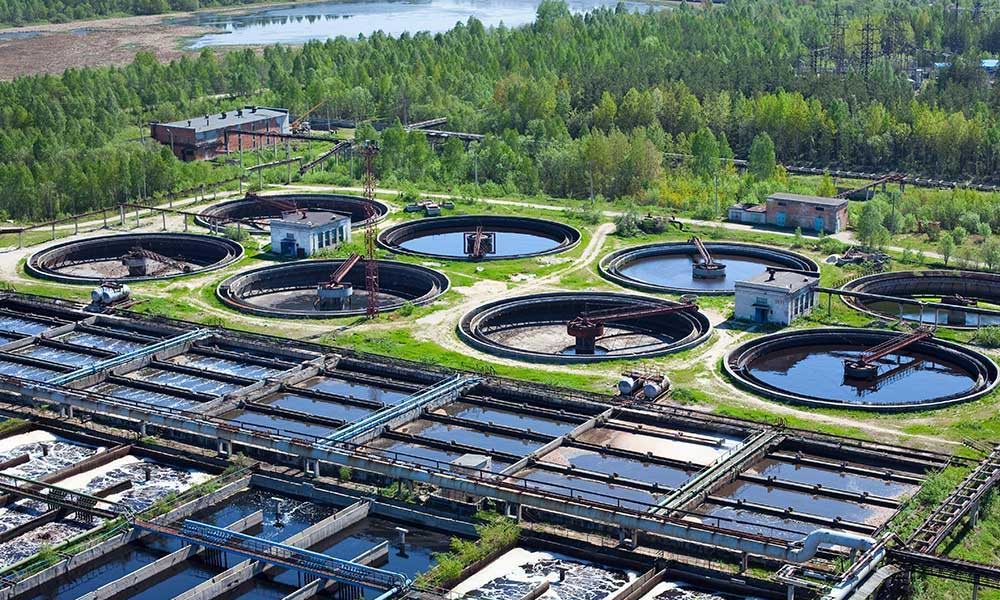Σε έναν κόσμο που αντιμετωπίζει την κλιμακούμενη ρύπανση και τη σπανιότητα των υδάτων, οι καινοτόμες λύσεις είναι ζωτικής σημασίας για να διασφαλιστεί καθαρό και ασφαλές νερό για όλους. Μια τέτοια λύση που έχει τραβήξει την προσοχή είναιΠολυχλωριούχο αργίλιο(PAC), μια ευέλικτη χημική ένωση που μεταμορφώνει το τοπίο της επεξεργασίας νερού.
Το νερό, ένας πεπερασμένος πόρος, απειλείται συνεχώς από διάφορους ρύπους και μολυσματικούς παράγοντες. Οι βιομηχανίες, η αστική ανάπτυξη και οι γεωργικές δραστηριότητες έχουν οδηγήσει στην απελευθέρωση επιβλαβών ουσιών σε υδάτινα σώματα, θέτοντας σε σοβαρό κίνδυνο τόσο το περιβάλλον όσο και την ανθρώπινη υγεία. Οι συμβατικές μέθοδοι επεξεργασίας νερού δυσκολεύονται να αντιμετωπίσουν την αυξανόμενη πολυπλοκότητα αυτών των ρύπων. Εδώ είναι που παρεμβαίνει η PAC, προσφέροντας έναν πιο αποτελεσματικό και βιώσιμο τρόπο καθαρισμού του νερού.
Τι είναι το χλωριούχο πολυαργίλιο;
Το πολυχλωριούχο αργίλιο, συχνά συντομογραφούμενο ως PAC, είναι ένα χημικό πηκτικό που χρησιμοποιείται συνήθως σε διεργασίες επεξεργασίας νερού. Προέρχεται από το χλωριούχο αργίλιο αντιδρώντας με υδροξείδιο, θειικό άλας ή άλλα άλατα. Το PAC είναι γνωστό για την ικανότητά του να απομακρύνει αιωρούμενα στερεά, οργανική ύλη και άλλες ακαθαρσίες από το νερό, καθιστώντας το ιδανική επιλογή για διάφορες εφαρμογές καθαρισμού.
Πώς λειτουργεί το PAC;
Το PAC λειτουργεί ως πηκτικό και κροκιδωτικό στην επεξεργασία νερού. Όταν εισάγεται στο νερό, σχηματίζει θετικά φορτισμένες πολυμερικές αλυσίδες που εξουδετερώνουν αρνητικά φορτισμένα σωματίδια όπως βρωμιά, ρύπους και μικροοργανισμούς. Αυτά τα εξουδετερωμένα σωματίδια στη συνέχεια συσσωματώνονται σε μεγαλύτερα σωματίδια που ονομάζονται κροκίδες. Αυτές οι κροκίδες καθιζάνουν, επιτρέποντας τον διαχωρισμό του καθαρού νερού από το ίζημα. Αυτή η διαδικασία είναι ιδιαίτερα αποτελεσματική στην απομάκρυνση ενός ευρέος φάσματος ρύπων, συμπεριλαμβανομένων βαρέων μετάλλων, βακτηρίων και οργανικών ενώσεων.
Πλεονεκτήματα χρήσης PAC:
Αποδοτικότητα: Το PAC προσφέρει ταχεία πήξη και συσσωμάτωση, με αποτέλεσμα ταχύτερο καθαρισμό σε σύγκριση με τις παραδοσιακές μεθόδους.
Ευελιξία: Μπορεί να χρησιμοποιηθεί σε διάφορες πηγές νερού, όπως η επεξεργασία πόσιμου νερού, η επεξεργασία λυμάτων, οι βιομηχανικές διεργασίες και άλλα.
Μειωμένη παραγωγή λάσπης: Το PAC παράγει λιγότερη λάσπη σε σύγκριση με άλλα πηκτικά μέσα, ελαχιστοποιώντας το κόστος απόρριψης και τις περιβαλλοντικές επιπτώσεις.
Ανοχή pH: Λειτουργεί αποτελεσματικά σε ένα ευρύ φάσμα pH, παρέχοντας σταθερά αποτελέσματα σε διαφορετικές συνθήκες νερού.
Αποδοτικότητα κόστους: Η αποτελεσματικότητα του PAC, σε συνδυασμό με τις χαμηλότερες απαιτήσεις δοσολογίας, μπορεί να οδηγήσει σε εξοικονόμηση κόστους στις διαδικασίες επεξεργασίας.
Βιωσιμότητα και Περιβαλλοντικές Επιπτώσεις:
Ένα από τα σημαντικά πλεονεκτήματα του PAC είναι η σχετικά χαμηλότερη περιβαλλοντική του επίδραση σε σύγκριση με άλλα πηκτικά. Η αποτελεσματική απομάκρυνση ρύπων μειώνει την ανάγκη για εκτεταμένη χρήση χημικών. Επιπλέον, η μειωμένη παραγωγή λάσπης συμβάλλει στην ελαχιστοποίηση της παραγωγής αποβλήτων.
Καθώς ο κόσμος αναζητά βιώσιμες λύσεις για την επεξεργασία νερού, η PAC είναι έτοιμη να διαδραματίσει ζωτικό ρόλο. Η προσαρμοστικότητα, η αποδοτικότητα και τα περιβαλλοντικά οφέλη της την καθιστούν έναν πολλά υποσχόμενο υποψήφιο για την αντιμετώπιση των προκλήσεων που αντιμετωπίζουν οι κοινωνίες όσον αφορά την ποιότητα του νερού.
Συμπερασματικά, το πολυχλωριούχο αργίλιο (PAC) αναδεικνύεται σε πρωτοποριακό παράγοντα στον τομέα της επεξεργασίας νερού. Με την ικανότητά του να απομακρύνει αποτελεσματικά τους ρύπους, να μειώνει την παραγωγή λάσπης και να λειτουργεί σε διάφορα επίπεδα pH, το PAC προσφέρει μια ισχυρή και βιώσιμη λύση στις αυξανόμενες ανησυχίες για τη ρύπανση των υδάτων. Καθώς οι κοινότητες και οι βιομηχανίες δίνουν ολοένα και μεγαλύτερη προτεραιότητα στο καθαρό νερό, ο ρόλος του PAC στη διασφάλιση ενός καθαρότερου μέλλοντος πρόκειται να επεκταθεί, σηματοδοτώντας ένα σημαντικό βήμα προς την παγκόσμια ασφάλεια των υδάτων.
Για ερωτήσεις και περισσότερες πληροφορίες, επικοινωνήστε με:
Ώρα δημοσίευσης: 25 Αυγούστου 2023


